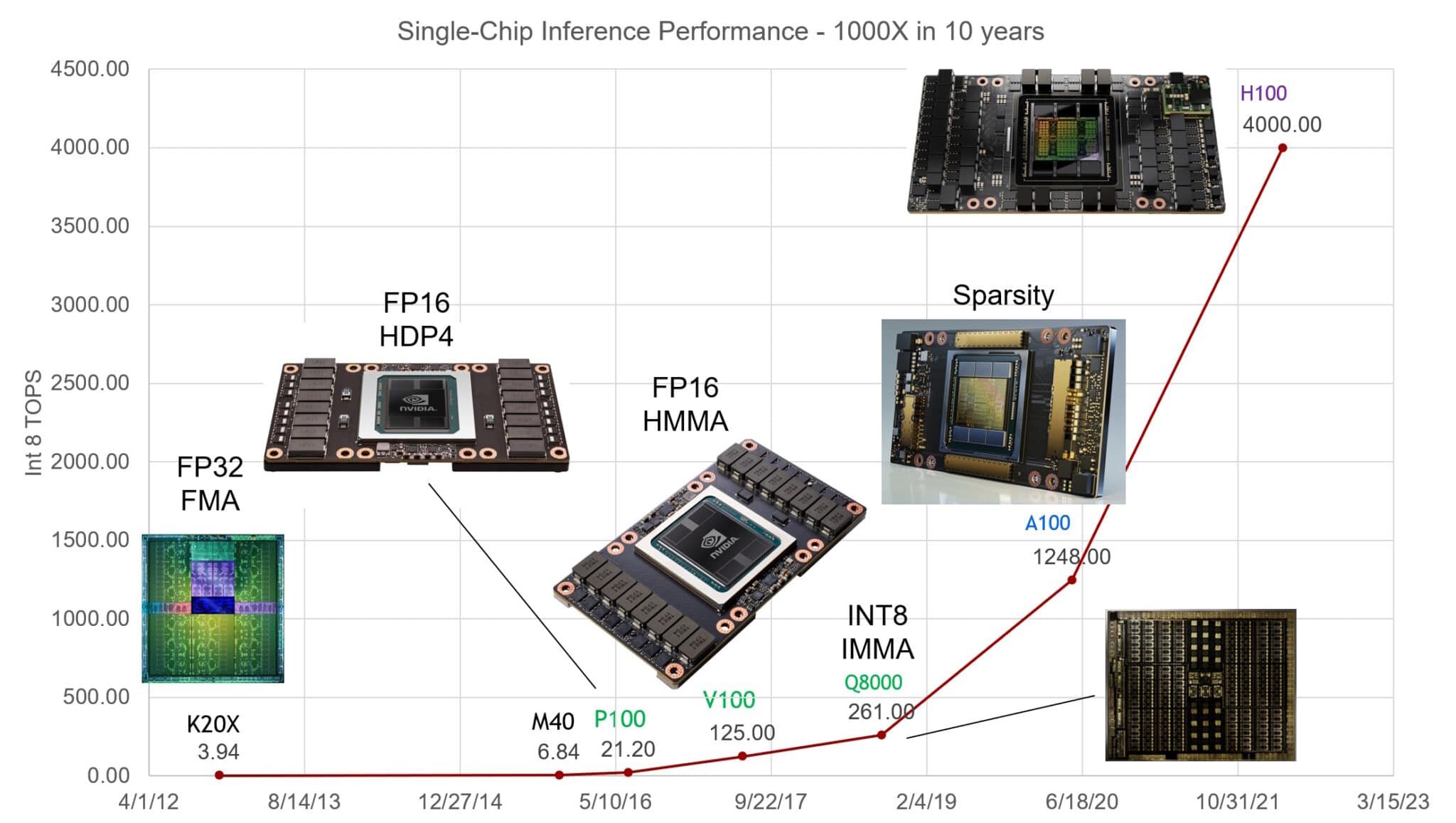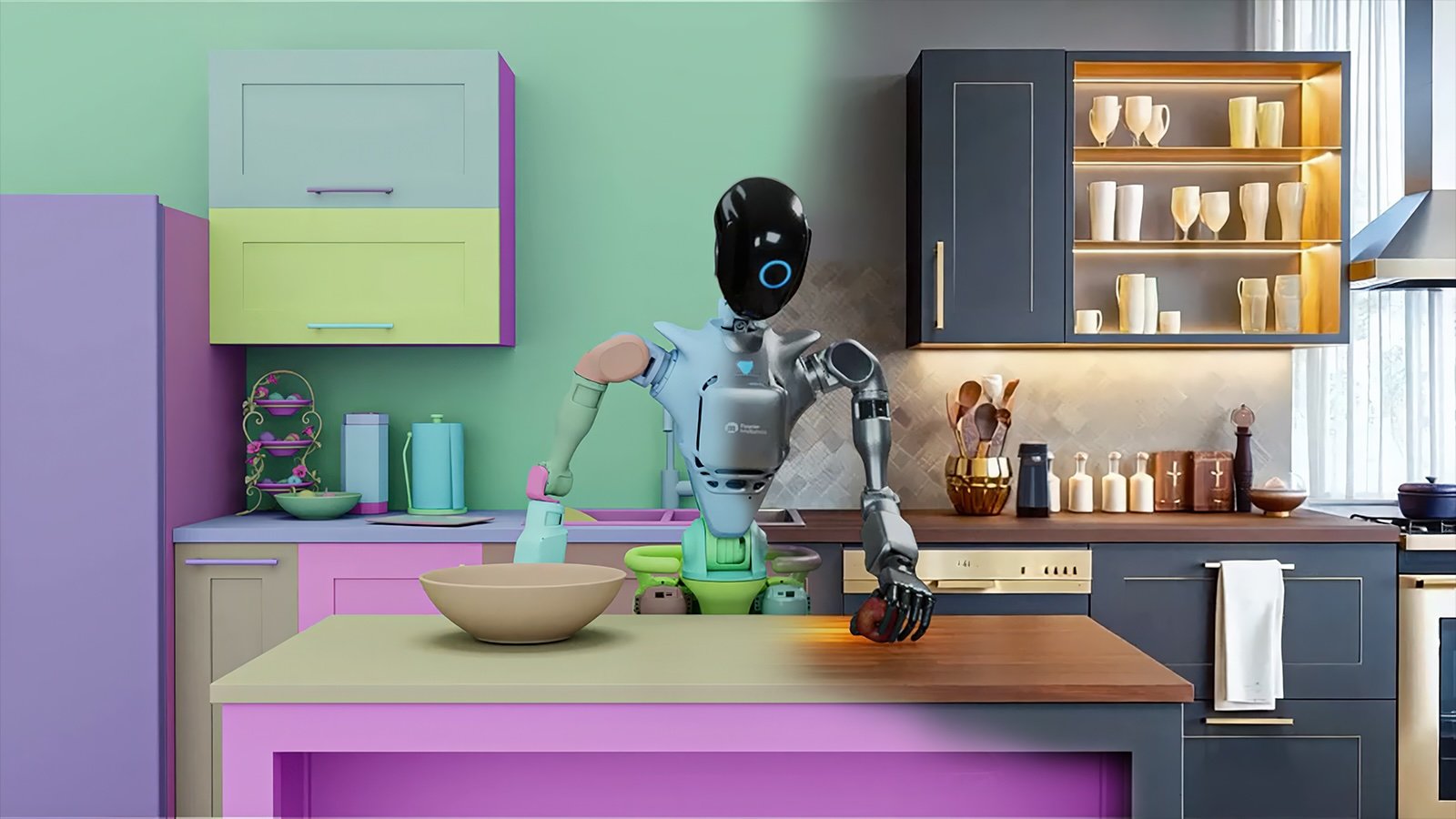Why GPUs Are the Powerhouse of AI: NVIDIA's Game-Changing Role in Machine Learning
Image Source: Nvidia
In the rapidly advancing landscape of artificial intelligence, Graphics Processing Units (GPUs) have emerged as indispensable tools, often likened to the "gold" of the AI era. NVIDIA, a leading GPU manufacturer, stands at the forefront, providing the computational power that fuels machine learning and generative AI technologies used by millions worldwide. This report delves into the technical prowess, historical significance, and economic impact of GPUs in the AI domain.
[Read More: Elon Musk's xAI Breakthrough: Supercomputer Built in 19 Days Sets New AI Benchmark]
Parallel Processing and Scalability
At the core of GPUs' effectiveness in AI lies their ability to perform parallel processing. Unlike Central Processing Units (CPUs), which handle tasks sequentially, GPUs can execute thousands of operations simultaneously. This parallelism is crucial for the complex matrix computations inherent in AI models, enabling faster and more efficient processing.
Moreover, GPU systems are designed to scale seamlessly to supercomputing levels. NVIDIA’s latest offerings, such as the Grace Hopper Superchips, integrate up to 256 GPUs into a single data-center-sized unit, boasting 144 terabytes of shared memory. These systems leverage advanced interconnects like NVLink and NVIDIA Quantum InfiniBand networks, ensuring rapid data transfer and coordination across multiple GPUs. This scalability is essential as AI models continue to grow exponentially in complexity and size.
[Read More: Elon Musk's Colossus: The New AI Giant Combining 100,000 Nvidia GPUs!]
Robust Software Ecosystem
NVIDIA’s comprehensive software stack significantly enhances the utility of its GPUs for AI applications. The CUDA (Compute Unified Device Architecture) programming language and the cuDNN-X (CUDA® Deep Neural Network) library provide a solid foundation for deep learning, enabling developers to build and optimize their models efficiently. Additionally, frameworks like NVIDIA NeMo (Neural Modules) allow for the customization and deployment of generative AI models, fostering innovation across various industries.
The NVIDIA AI platform encompasses hundreds of software libraries and applications, many of which are open-source, facilitating widespread adoption and collaboration. For enterprises requiring robust security and support, the NVIDIA AI Enterprise platform offers a curated suite of over a hundred software components. These tools are also integrated into major cloud services, providing scalable and accessible AI solutions for businesses of all sizes.
Outpacing CPUs by Orders of Magnitude
The performance gains achieved by NVIDIA GPUs are staggering. According to Stanford’s Human-Centered AI group, GPU performance has surged approximately 7,000 times since 2003, with the price-per-performance ratio improving by 5,600 times. Independent research firm Epoch corroborates this, highlighting GPUs as the dominant platform for machine learning workloads, instrumental in training the largest AI models over the past five years.
NVIDIA’s advancements are further exemplified by their Tensor Cores, which have evolved to become 60 times more powerful in their latest iterations. The H200 Tensor Core GPUs, unveiled in November, feature up to 288 gigabytes of HBM3e memory, enabling unprecedented data handling capabilities. These innovations have resulted in NVIDIA GPUs consistently leading MLPerf benchmarks, securing top positions in both training and inference tasks since 2019.
[Read More: Nvidia CEO Introduces "Hyper Moore’s Law" to Accelerate AI Computing]
Real-World Impact: Powering Innovations like ChatGPT
One of the most visible manifestations of GPUs' impact on AI is OpenAI’s ChatGPT, a large language model (LLM) that operates on thousands of NVIDIA GPUs. Serving over 100 million users, ChatGPT exemplifies how GPUs facilitate real-time generative AI services, delivering swift and accurate responses by leveraging the massive parallel processing power of NVIDIA’s hardware.
In specialized sectors, NVIDIA GPUs have demonstrated exceptional performance. For instance, in the financial services industry, GPUs achieved thousands of inferences per second on demanding models within the STAC-ML (SpatioTemporal Asset Catalog - Machine Learning) Markets benchmark. Additionally, innovative applications such as AI-driven climate change mitigation have seen speedups of up to 700,000 times, showcasing the transformative potential of GPU-accelerated AI solutions.
[Read More: AI Breakthrough: OpenAI’s o1 Model Poised to Surpass Human Intelligence]
Historical Context
The synergy between GPUs and AI has deep roots, with early AI pioneers recognizing their potential. In 2008, Stanford researcher Andrew Ng and his team achieved a 70-fold speedup in AI model processing using NVIDIA GeForce GTX 280 GPUs compared to traditional CPUs. This breakthrough underscored the computational advantages of GPUs, setting the stage for their widespread adoption.
Geoff Hinton, a seminal figure in modern AI, was instrumental in promoting GPU usage. His advocacy at conferences like NIPS (now NeurIPS - Neural Information Processing Systems) in 2009 convinced over a thousand researchers to invest in GPUs, anticipating their pivotal role in the future of machine learning. These endorsements from leading experts have been critical in establishing GPUs as the standard hardware for AI research and development.
[Read More: Sam Altman: A Name That You Should Know in the AI Era]
Trillions in Potential Growth
The integration of GPUs in AI is not just a technological advancement but also an economic catalyst. A McKinsey report projected that generative AI could contribute between $2.6 trillion to $4.4 trillion annually across 63 use cases in industries such as banking, healthcare, and retail. This immense value creation underscores the strategic importance of GPUs in driving AI innovations that can transform global markets.
Moreover, with over 40,000 companies utilizing NVIDIA GPUs for AI and accelerated computing, and a global community of 4 million developers, the ecosystem is poised for continued growth and diversification. NVIDIA’s ongoing contributions, including advancements like the Grace Hopper Superchips and the H200 Tensor Core GPUs, are expected to sustain and amplify this economic impact.
[Read More: Do You Know That You Are Witnessing the 5th Industrial Revolution?]
Source: NVIDIA Blog













